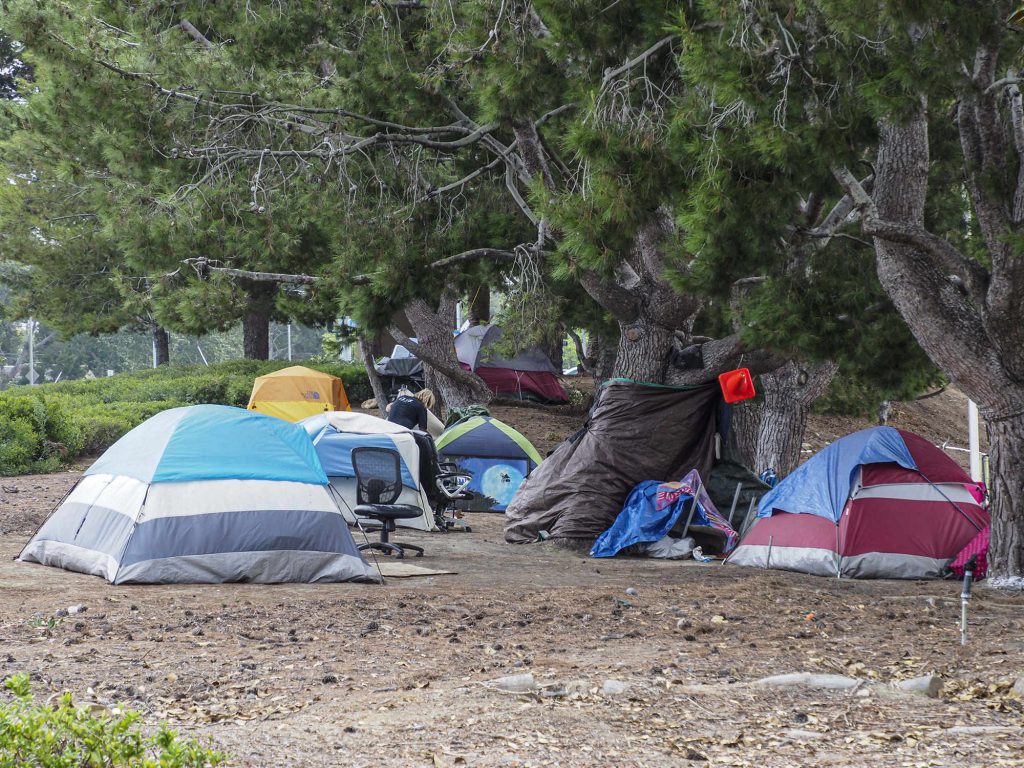
— Photo by Lawrence Sherwin ©
After about two hours of discussion about issues related to homelessness in Newport Beach during a special meeting this week, City Council members directed staff to pursue and/or consider two locations for a temporary shelter.
Council members directed staff to pursue negotiations with 4200 Campus Dr., City Attorney Aaron Harp said in his closed session report on Tuesday. The location is owned by Avis Rent A Car Systems, LLC.
Most public speakers supported the location on Campus Drive near John Wayne Airport as the best choice.
Council also directed staff to consider 592 Superior Ave., a municipal utility yard, as a possible location and return to Council with more information added Mayor Diane Dixon.
The shelter would be by reservation or referral only, and would be in a high security, 24/7 environment, staff confirmed.
Council did not provide direction regarding the property at 825 W. 16th St., Harp added. So “nothing will happen” at that property, unless it appears on a future agenda, which, as one resident pointed out and Council members agreed, is unlikely.
“This is the start of a discussion, from a process point of view,” noted City Manager Grace Leung, but they are going “full cylinder” on multiple tracks.
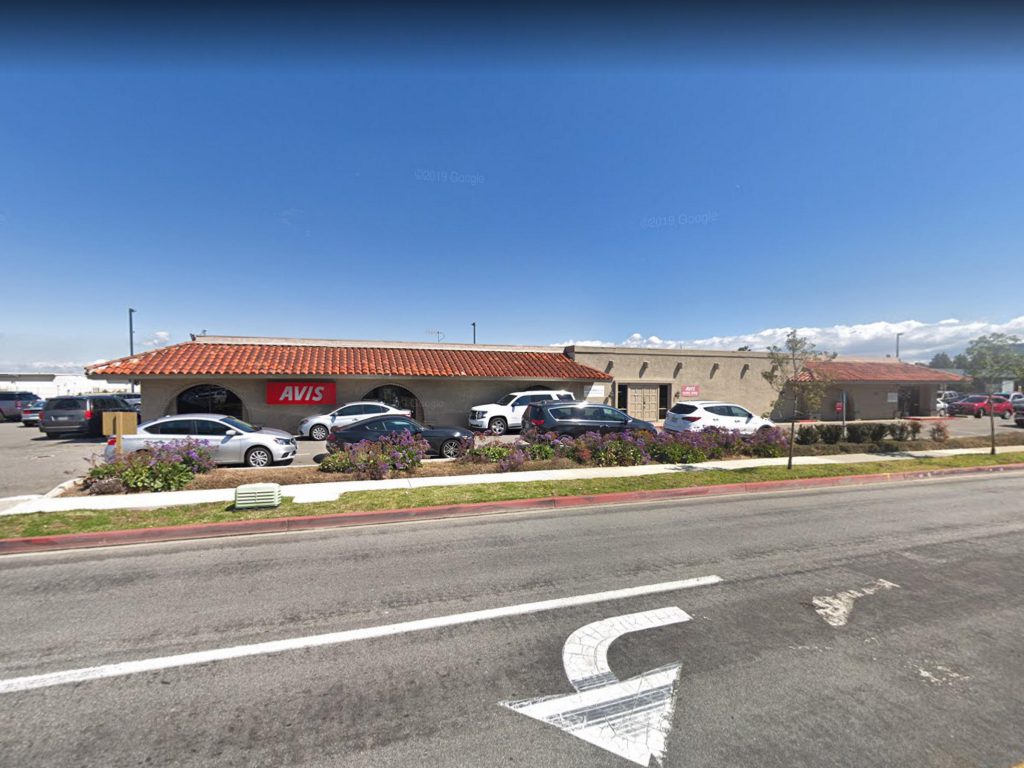
— Google Map data 2019 ©
This is a short-term solution that will allow the city to enforce their anti-camping ordinance, she added, but long-term strategies need to be developed.
Initially, the old Pine Knot Motel property at 6302 W Coast Hwy., was on the list to be considered.
Council members unanimously agreed to drop the Pine Knot Motel location, reasoning that the since the site is within the coastal zone, even though the city has its own Local Coastal Program and can approve development permits, as a “major public works project” it could be appealed to the California Coastal Commission, which would be too lengthy of a process.
Councilman Brad Avery also pointed out that the Newport Heights neighborhood already has a facility that accommodates homeless veterans.
During public comment, several Newport Shores residents urged the Council to remove the Pine Knot location from consideration. Ultimately, Council agreed and voted 7-0 to take it off the list.
Several public speakers also noted the proximity of Carden Hall to the proposed 16th Street site. Residents raised concerns about the homeless population, some of whom may be intoxicated or using drugs, interacting with the school children.
The discussion prior to the closed session meeting was held in a packed Council chambers with standing room only for the approximate 250 people attending the meeting, and overflow filling the community room next door to capacity.
Public comments ranged from encouraging the city to quickly construct a temporary shelter to help the problem as soon as possible to suggesting completely removing homeless individuals from the city.
Resident Moniqua Christensen said she pays $10,000 in taxes and choose that none of that goes to the homeless. If they’ve worked in the past and been productive, they can get a job again, she argued. Many of the homeless were let out jail without rehabilitation or transitional training, she noted, the blame for that should be placed on past state administration, not the homeowners.
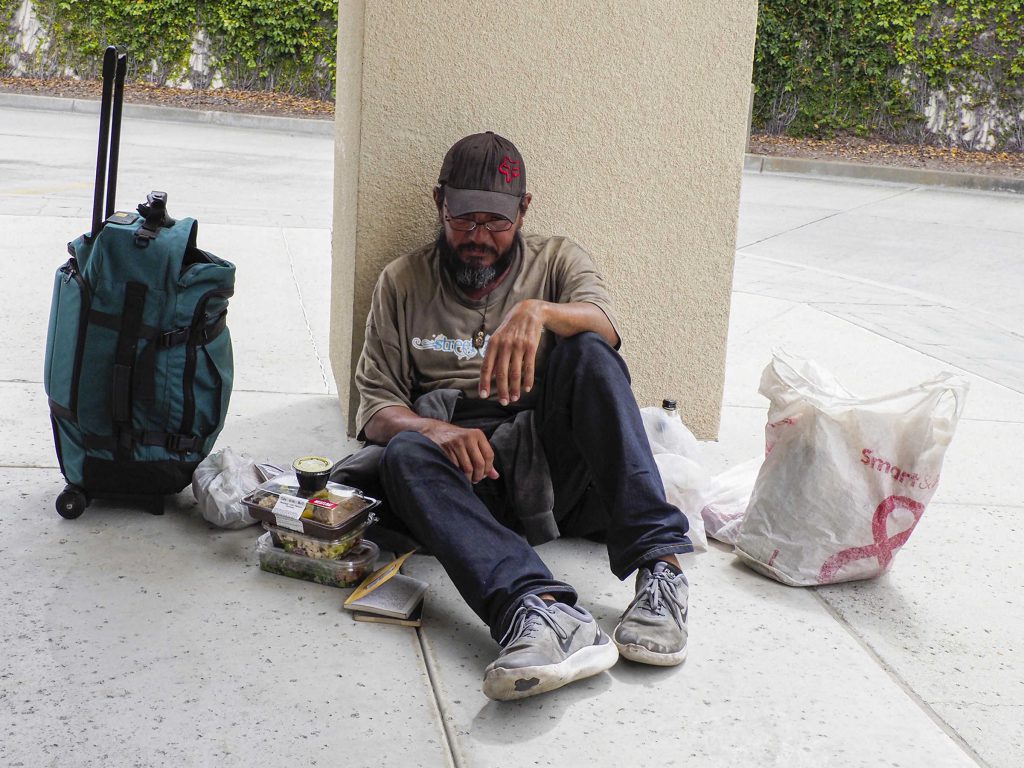
— Photo by Lawrence Sherwin ©
“You need to find somewhere else to put them,” Christensen said. “they are not residents of Newport Beach… There’s no reason for them to be in Newport Beach.”
They don’t have a constitutional right to have shelter or a roof over their head, she added.
“We do not need to spend our money on a shelter in Newport Beach for drug addicts,” Christensen concluded.
Another Newport resident agreed, saying there is a lot of land elsewhere in the state, like the desert, where a “community” could be built, she said.
“So they can start a new life out in the desert area where there’s open space,” she said. “There should not be a shelter, whatsoever, in the beautiful city of Newport Beach.”
As a few other residents and staff explained, the reasoning behind the city pursuing shelter locations is prompted by federal lawsuits, as one Lido Island resident pointed out.
“I, for one, understand that that is why you have to do that,” she said. “In order to protect our community, you have been mandated by the federal government to provide shelter or you can’t enforce what you need to enforce to protect us.”
Through her experience with the Orange County Rescue Mission and raising a bipolar son, she understands both sides of the coin, she said.
“It’s a little personal for me,” she said, choking up a bit.
She suggested the new shelter operate similar to the Tustin emergency shelter.
“By offering a dignified and semi-private sleeping area and not a homeless warehouse,” she said.
A shelter that encourages the guests to stay on-site and get the help they need to get back on their feet, 24/7, so police can make referrals at night, on-site sobriety and substance abuse treatment, and mental health help, a transportation program so people can’t simply walk in and out, and onsite security workers.
Several residents also suggested working with Costa Mesa for a long-term solution.
A number of public speakers said most homeless people drink, take drugs, and commit crime; others noted that are many well-intentioned people or families that simply fell on hard times and residents should take the time to understand them as individuals and learn their story.
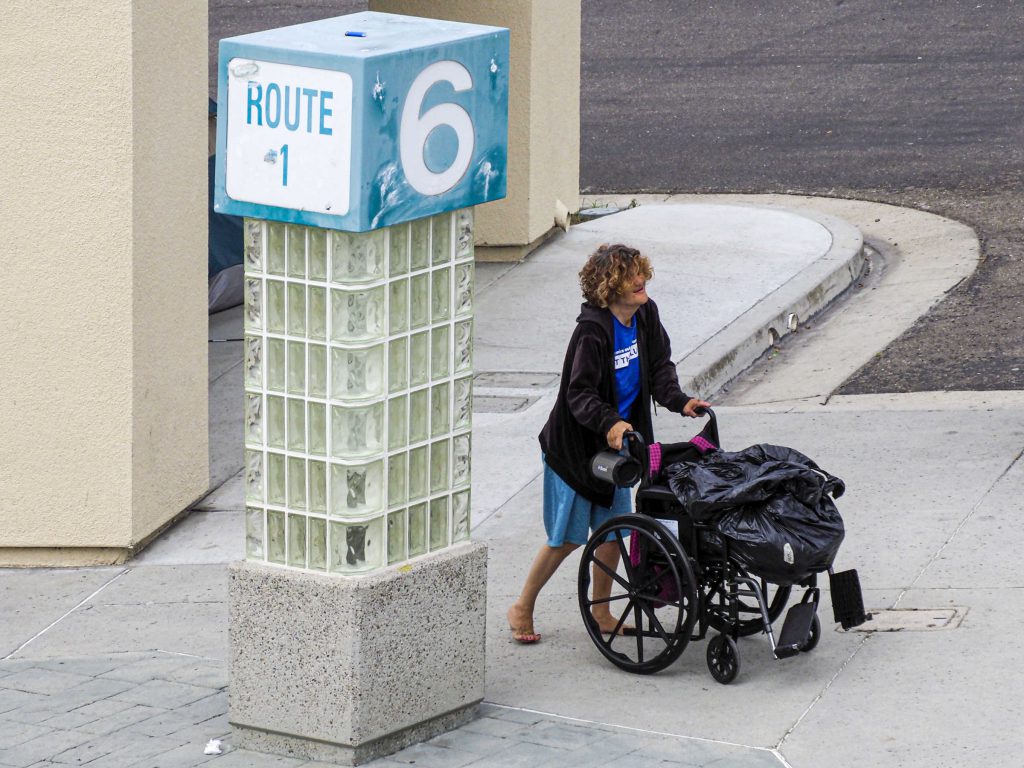
— Photo by Lawrence Sherwin ©
Corona del Mar resident Dean Stratton said the majority of homeless individuals have an alcohol or drug problem.
“The homeless problem is largely a substance abuse problem masquerading as a homeless issue,” Stratton said.
Diana Hensley, the counseling psychologist for OC Gateway to Housing, noted that some speakers painted “a very fear-based picture,” that all homeless people are addicted to drugs and/or are criminals.
“That is not true,” she emphasized. “Newport Beach does not suffer from an image problem, the homeless do.”
Many are middle-class families who have fallen down on their luck, some have been the victim of domestic violence, others simply lost their jobs, she explained.
“You would actually like to know them,” Hensley said. “I don’t know if people here have ever sat and talked with homeless person, they run the gamut [of different types of people and back stories].”
Newport Beach resident Hoiyin Ip, very reluctantly, got involved with a homeless organization about a decade ago.
“I quickly realized many of them were not as bad as they looked,” Ip said. “Sometimes I was actually inspired by some of the things they did.”
But, she admitted, she still sometimes judges. As a way to help her better understand, she recently read “My Way Home: Growing Up Homeless in America,” a book by Michael Gaulden about his life living on the streets and shelters.
The book is at the “heart” of the issue, Ip noted, it’s the complete story of what many homeless people are going through. She suggested the library host a book reading or event by Gaulden, or an author with a similar book.
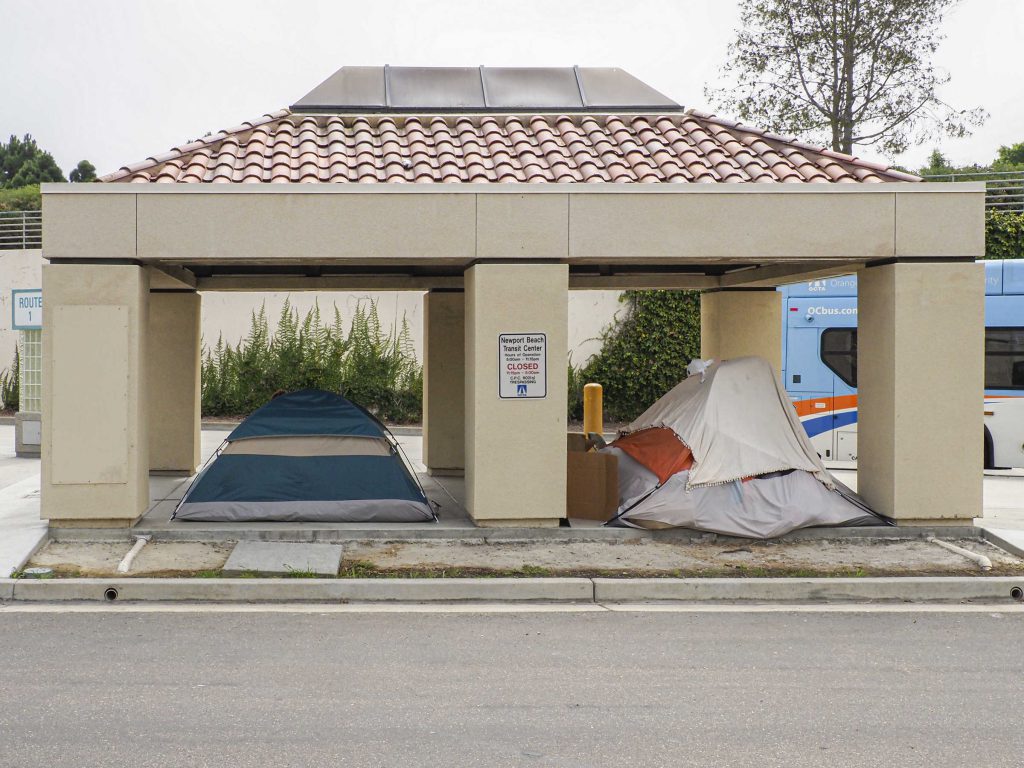
— Photo by Lawrence Sherwin ©
“To reach effective solutions, we should know the other side of the story,” Ip said.
Although opinions on the issue vary, there is one underlying feeling that unifies everyone involved, Mayor Pro Tem Will O’Neill pointed out.
“We’re all incredibly frustrated,” O’Neill said.
O’Neill summarized that it’s frustrating for a number of reasons: To talk about the issue and potential solutions; to see an increase in panhandlers and a growing number of tents at the transportation center; to hear that the laws regarding this issue seem to shift; and, most of all, that there are fellow human beings living on the street.
“This is an issue that clearly has consumed a substantial amount of our time and resources,” said O’Neill, who chairs the city’s Homeless Task Force. “We need to move quickly, but not so quickly that we make decisions that are bad and stay with us for years to come.”
The number of homeless in Newport Beach has hovered between 60 and 80, O’Neill noted.
The city is discussing how to address homelessness and the encampment at the transportation center with the Orange County Transportation Authority and the Irvine Company, Leung noted. They are also looking into working with nearby cities
Fencing, enforcing hours of use, and landscaping are all in the works at the OCTA center on Avocado Ave.
The closed session included discussing initiating negotiations for the lease of property for a temporary homeless shelter. The city’s negotiators are Leung, Community Development Department Director Seimone Jurjis, and Real Property Administrator Lauren Whitlinger.
The agenda originally only listed public comments and the closed session items, but “given extensive public interest in discussion of a temporary homeless shelter,” the city added a discussion item.
For more information, visit newportbeachca.gov
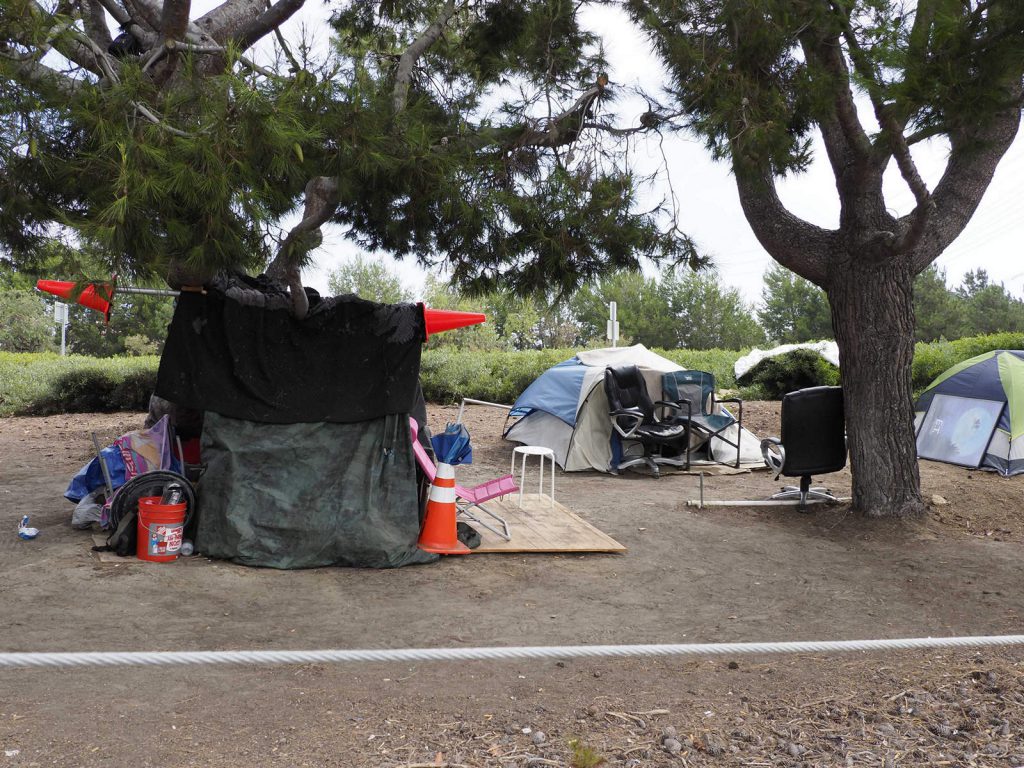
— Photo by Lawrence Sherwin ©




